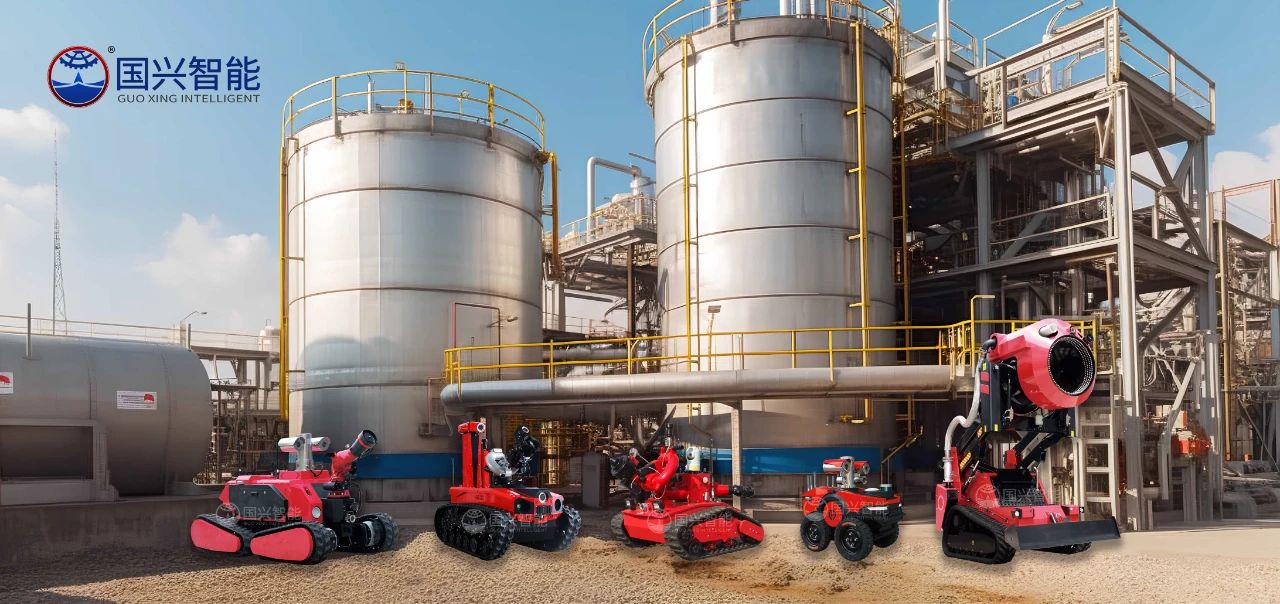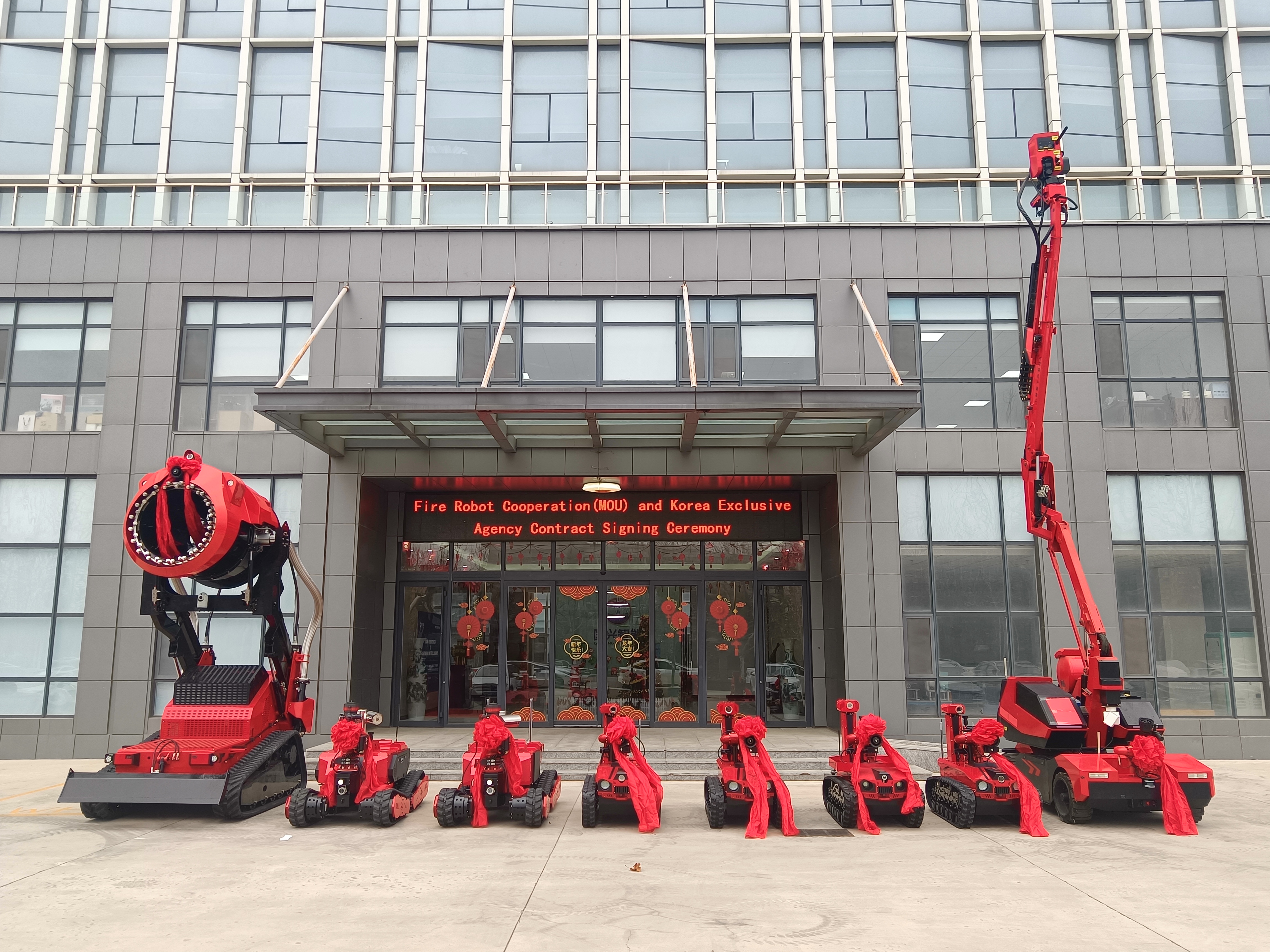Views: 0 Author: Site Editor Publish Time: 2025-05-16 Origin: Site








The need for advanced solutions in emergency response has never been more pressing. As urbanization, industrial development, and climate change continue to affect our world, fires have become a significant threat to life, property, and the environment. Traditional firefighting methods, while effective, often struggle to meet the demands of modern-day fire scenarios. With this in mind, the development and integration of firefighting robots present a futuristic solution that promises to transform emergency response and fire management.
Firefighting robots combine cutting-edge technology with practical applications to help firefighters in their life-saving efforts. These robots are designed to work autonomously, navigate hazardous environments, and extinguish fires more efficiently than humans can in certain situations. As fire safety concerns evolve, the role of robotics in firefighting is becoming increasingly important, offering a new way to combat fire-related disasters.
The integration of robotics into firefighting is not about replacing human firefighters, but rather about complementing their efforts. Firefighters are often exposed to extreme risks when responding to large-scale fires, especially in environments that are difficult to reach or filled with hazardous materials. Firefighting robots, equipped with advanced sensors and firefighting systems, can assist in situations where human intervention would be too dangerous or impractical.
For instance, in industrial fires, firefighting robots can be sent into highly toxic environments or areas where flammable chemicals may make it unsafe for human firefighters to operate. By handling the most dangerous tasks, these robots allow human teams to focus on coordinating the overall fire response from a safe distance.
Firefighting robots are incredibly versatile and can be deployed across a wide range of fire scenarios. Whether it's a forest fire in rural areas, an industrial blaze in a factory, or a raging fire in an urban high-rise, firefighting robots can adapt to each unique environment.
Industrial Fires: Firefighting robots are designed to tackle fires in manufacturing plants, oil refineries, and chemical factories. These environments are often filled with flammable liquids, gases, and toxic substances, making them extremely hazardous for human responders. Robots, however, can navigate these spaces safely, extinguishing fires before they spread and cause more damage.
Urban Fires: In densely populated urban areas, robots can assist in fighting fires in hard-to-reach places, such as high-rise buildings or narrow alleys. With their ability to move quickly and efficiently, robots can reach areas that are otherwise difficult for firefighters to access due to blocked roads or collapsed structures.
Forest Fires: For wildfires that occur in forests or open fields, firefighting robots can be deployed to help contain the blaze. Robots can maneuver across rugged terrains, withstand extreme temperatures, and fight fires without requiring the long hours of exposure that human firefighters would face in such environments.
Firefighting robots are designed to withstand extreme conditions that would otherwise be impossible for humans. With advanced cooling systems, heat-resistant materials, and highly durable frames, these robots can continue to operate in intense heat, smoke, and hazardous conditions for extended periods.
For example, certain robots are equipped with thermal sensors that allow them to detect heat sources even in low visibility environments, such as during thick smoke or at night. They can use this information to target the most dangerous areas of the fire, applying the right amount of extinguishing agent to stop the fire in its tracks.

The primary advantage of firefighting robots is the increased safety they provide to human firefighters. By taking over the most dangerous tasks—such as entering burning buildings, navigating through hazardous debris, or fighting fires in toxic environments—firefighting robots significantly reduce the exposure of human responders to life-threatening situations.
In addition to minimizing risk, robots also ensure that firefighters are not overburdened by physically demanding tasks that could lead to exhaustion, injury, or burnout. This helps to maintain the overall effectiveness of the firefighting team and ensures that firefighters can continue to respond to emergencies over a longer period without compromising their safety.
Firefighting robots are designed to be faster and more efficient than human responders in many fire scenarios. Equipped with sensors, cameras, and communication systems, these robots can assess the fire situation and initiate suppression operations almost immediately after arrival. This leads to a significant reduction in response time and allows for quicker containment of the fire, preventing it from spreading uncontrollably.
For example, in urban fires, where every second counts, firefighting robots can be deployed from a remote location using automated systems, ensuring that help arrives as soon as possible. They can also be programmed to work alongside human teams, providing real-time data and insights to improve decision-making.
One of the most significant advantages of firefighting robots is their ability to navigate difficult terrains. Whether it’s the uneven ground in a forest, narrow hallways in a collapsed building, or tight spaces in an industrial facility, firefighting robots are built to operate in areas where traditional firefighting methods would struggle.
Robots can traverse rough terrains, climb stairs, move through debris, and even access high-altitude areas without requiring human intervention. They are also designed to withstand extreme weather conditions, ensuring they can be deployed during heavy rain, extreme heat, or snowstorms, which would hinder traditional firefighting techniques.
Autonomous firefighting robots can operate without direct human control, making them ideal for environments where it is unsafe for people to go. For instance, in nuclear power plants, oil refineries, or chemical facilities, robots can autonomously detect and suppress fires in areas that are too dangerous for human intervention due to the presence of hazardous materials or high levels of radiation.
These robots use AI and real-time data to make decisions, ensuring that the fire is handled quickly and efficiently. They can also be programmed to collaborate with human teams, sharing critical information that can be used to adjust fire suppression strategies on the fly.
Artificial intelligence (AI) and automation are rapidly changing how fires are managed. Firefighting robots utilize AI to enhance their decision-making capabilities, allowing them to analyze real-time data, assess fire conditions, and choose the most effective course of action.
For example, AI-powered robots can distinguish between various fire types (e.g., electrical, chemical, organic) and select the appropriate extinguishing method for each scenario. This technology also allows the robots to work autonomously, reducing the need for manual control and enabling quicker, more efficient firefighting efforts.
One of the most significant innovations in firefighting robot technology is the integration of real-time data processing. Robots are equipped with sensors that detect heat, smoke, gas, and other environmental factors. By processing this data instantly, robots can make decisions on how best to fight the fire, adjusting their actions as the situation evolves.
This capability is crucial in dynamic fire scenarios, where conditions can change rapidly. By relying on AI to process real-time data, robots can anticipate shifts in the fire's behavior, such as how quickly it might spread, which areas require the most attention, and how to optimize firefighting resources.
The future of firefighting lies in autonomous systems. Firefighting robots equipped with autonomous fire suppression systems are already being deployed to assist human responders. These systems use sensors and machine learning algorithms to detect the source of the fire, calculate the most effective way to suppress it, and then automatically engage the appropriate firefighting tools, such as water cannons, foam dispensers, or fire retardants.
Autonomous fire suppression ensures that the robot can act swiftly and effectively without waiting for manual intervention, helping to contain fires before they get out of hand.

Firefighting robots are poised to play an essential role in the future of fire safety and emergency response. By increasing the safety of firefighters, improving operational efficiency, and providing solutions to fight fires in the most challenging environments, these robots are revolutionizing fire management.
As technology continues to advance, the integration of AI and automation will only make firefighting robots more effective, ensuring that they remain indispensable tools in fire prevention, suppression, and disaster management.
At Shandong Guoxing Intelligent Technology Co.,Ltd., we are at the forefront of advancing fire safety technologies, and we invite industries to explore the latest innovations in firefighting robotics. By embracing these cutting-edge solutions, companies can enhance their fire safety measures, minimize risks, and protect both people and property from the devastating effects of fires.
Understanding Explosion-Proof Standards: Differences Between ATEX And China’s GB
Tracked Robot Chassis Selection Guide: Load Capacity, Speed, And Endurance Explained
RXR-M120D Vs RXR-M150GD: Application Comparison of Large Flow Firefighting Robots
2025 Industrial Firefighting Robot Trends | Guoxing Robotics
The Future of Firefighting: Integrating Advanced Robots for Industrial Safety And Rescue Operations
How Shandong Guoxing’s Tank Treads Provide Superior Traction for Heavy Equipment Transportation
Fire Fighting Robots Vs Traditional Firefighting: A Comparison